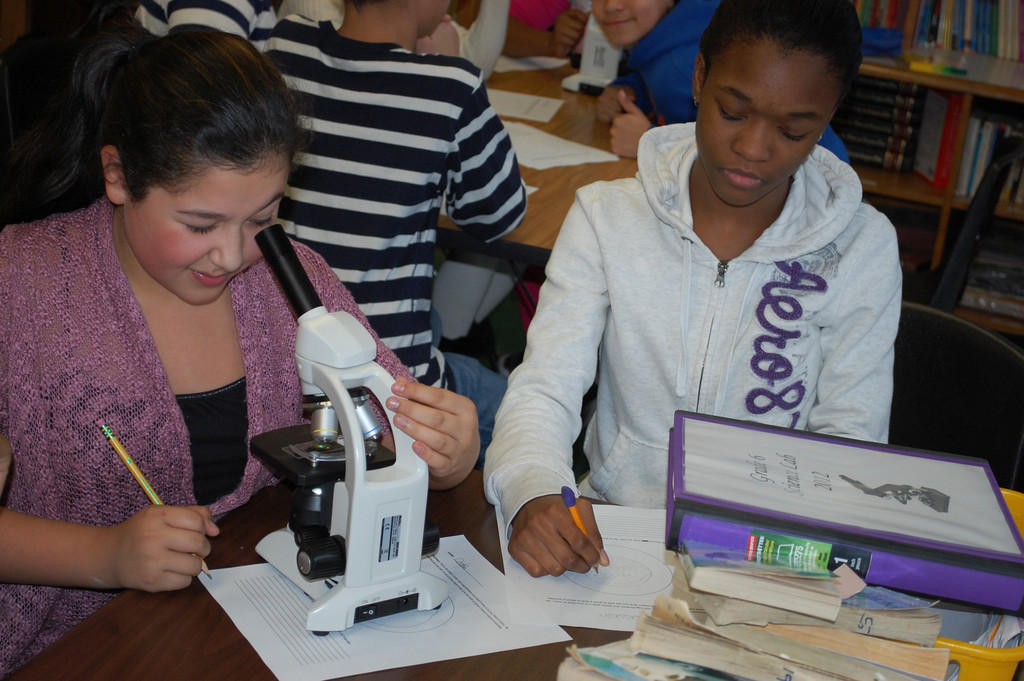Microscopes open up new worlds in District 13
District 13 students are seeing the world in a way they’ve never seen it before — really up close. This year, the district purchased new microscopes to allow the budding scientists to study the tiniest components of life.
The microscopes were funded through a grant from State Sen. Dean Skelos. By the end of the school year, there will be at least eight in each of the four elementary schools. The district also purchased microscope cameras to display images on SmartBoards for an entire class to view.
According to Superintendent Dr. Adrienne Robb-Fund, the microscopes are a first for District 13. She said the initiative is a result of the work of the Interdistrict Curriculum Council, a group of educational leaders from the four Valley Stream school districts. The goal is to provide a strong science education in the elementary schools, particularly fifth and sixth grade, so students will be poised to handle an accelerated science course when they are in junior high school.
Wheeler Avenue School Principal Gayle Steele said it will be good for students to have the experience of using laboratory equipment when they enter the high school district where they will be required to conduct hands-on experiments.
In sixth-grade classes at Wheeler Avenue, children have already looked at pieces of cloth, cheek cells, a horseshoe fly and plant cells. “We learn what types of cells and organisms are in the world,” said Darius Badger, who was observing a plant stem with a small group of classmates during a science lesson last month.
Robb-Fund said teamwork is key, and that’s why it’s not a problem having only a limited number of microscopes per school. She said it is important for students to work together to share their observations and have meaningful scientific discussions. “We want the kids to work in cooperative groups,” she said, “because scientists work cooperatively and collaboratively.”
Sixth-grader Bryan Shivram noted that the microscopes have the ability zoom in real close on objects. When he increases the magnification, he said he can clearly see a cell and all of its parts.
“You can really see what’s there and you can really get a good description of it,” added sixth-grader Niyah Armstrong, who said she had never used a microscope before this year. “I think it’s cool that you can see things you never thought you would see before.”
Steele said she is impressed with how engaged students are in science when using the microscopes. They have a hunger to learn, she explained, and they enjoy the freedom of making their own observations. “Science is not always about a right or wrong answer,” she said. “It’s about exploring.”

 49.0°,
Fair
49.0°,
Fair 







